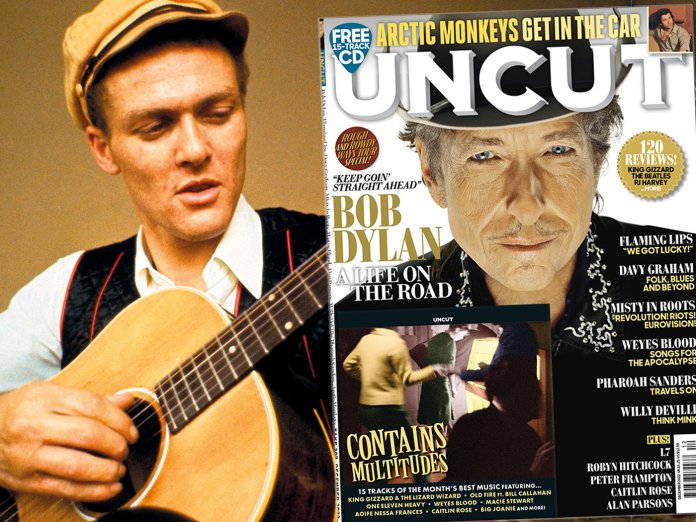He was a revolutionary spirit at the vanguard of the ’60s folk movement, until drug addiction and mental health issues waylaid his mercurial talent. Here friends and collaborators and – among them Shirley Collins, Martin Carthy and Ray Davies – celebrate the nimble-fingered magic of DAVY GRAHAM. “He burned very brightly for a short time, and no-one forgot that,” hears Rob Hughes, in the latest issue of Uncut magazine – in UK shops from Thursday, October 13 and available to buy from our online store.
Shirley Collins has never cared much for jazz. So in 1964, when her husband suggested getting together with a hotshot guitarist he’d seen in a London jazz club, she hardly jumped at the idea. Undeterred, Austin John Marshall pressed on with introductions, inviting 23-year-old Davy Graham over to their home in Blackheath.
“I thought, ‘God, this is going to be awful,’” Collins recalls. “This tall young man, rather unsmiling at first, came in and starting playing “She Moved Through The Fair”, which I’d seen Margaret Barry sing at the Albert Hall. I couldn’t see how anybody could get away from her banjo sound, but the minute Davy started to play it, I realised that he absolutely understood the essential Irishness of the song. Yet he also somehow managed to bring it several stages forward, in the most beautiful way. When I started singing, the possibility of it was almost God-given. It was just mind-changing.”
The result, Folk Roots, New Routes, issued early the following year, proved a landmark. Collins’ pure voice found thrilling contrast in Graham’s sinuous fusion of styles drawn from North Africa, the Middle East and Indian raga forms. World music transposed onto a clutch of traditional folk songs. “At that time in folk music, nobody was making much effort to go through archives or collections to hear anything good, with the exception of Martin Carthy,” explains Collins. “But Davy had dug deeper and had a real understanding of the music. He could light up a song.”
Folk Roots, New Routes and the solo Folk, Blues & Beyond, also released in 1965, affirmed Graham’s reputation as the most prized guitarist of his generation. He’d spent the previous few years gigging around the capital’s folk dens and coffee houses, expanding the remit of traditional music in ways that hardly seemed feasible. Not only was he a dazzling technician, but he redefined folk guitar through a process of modal experiments, supple jazz phrasings and the absorption of his own tuning: DADGAD.
“Everybody saw his genius,” acknowledges Roy Harper, another contemporary who shared bills with Graham during the ’60s. “In some way, we all worshipped him. He was almost existing in a separate realm where jazz had been at least as important as acoustic folk.”
Graham’s calling card was “Angi”. A ravishing instrumental, first heard on a joint EP with Alexis Korner, it swiftly became a go-to for every aspiring folk guitarist in Britain. Key disciples of Graham’s like Bert Jansch, John Renbourn and Paul Simon were among those who covered it (the version on Sounds Of Silence kept Graham in royalties for some time). “Everybody in that particular folk guitar circle looked up to Davy, because he’d gone into it in such detail,” says Martin Carthy. “He was just incredibly adventurous for the time. He knocked everybody out.”
PICK UP THE NEW ISSUE OF UNCUT TO READ THE FULL STORY



